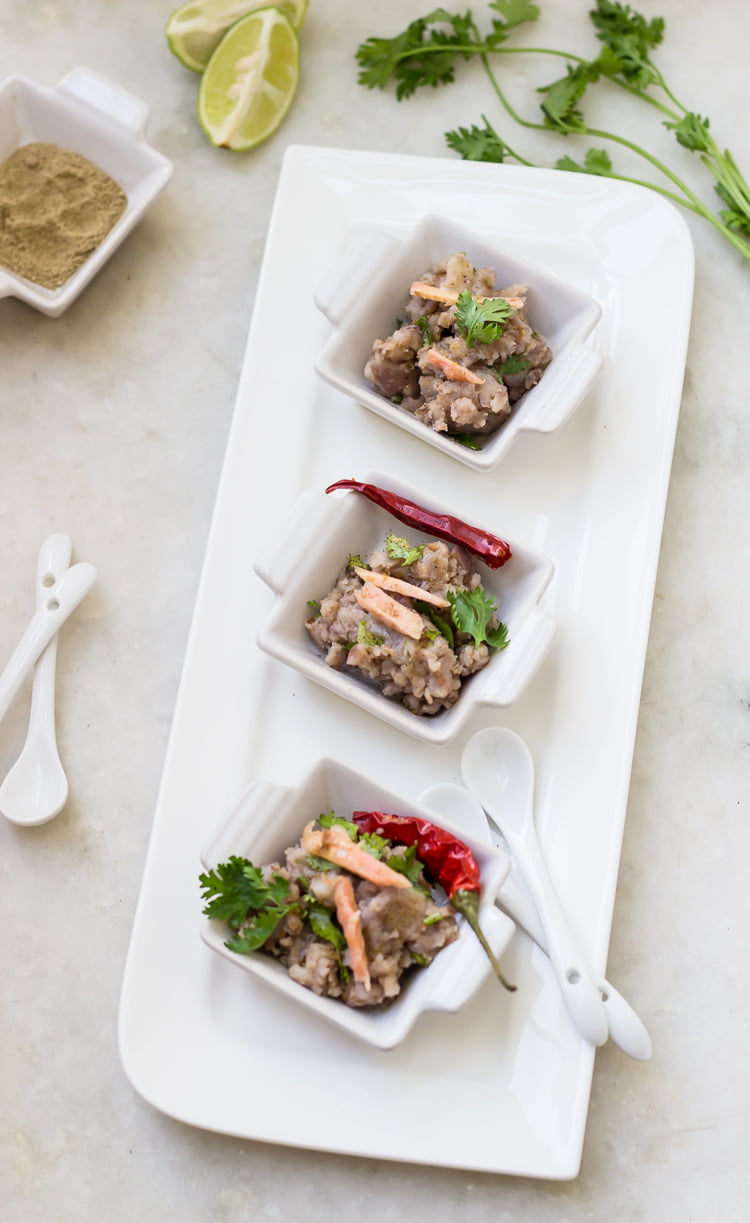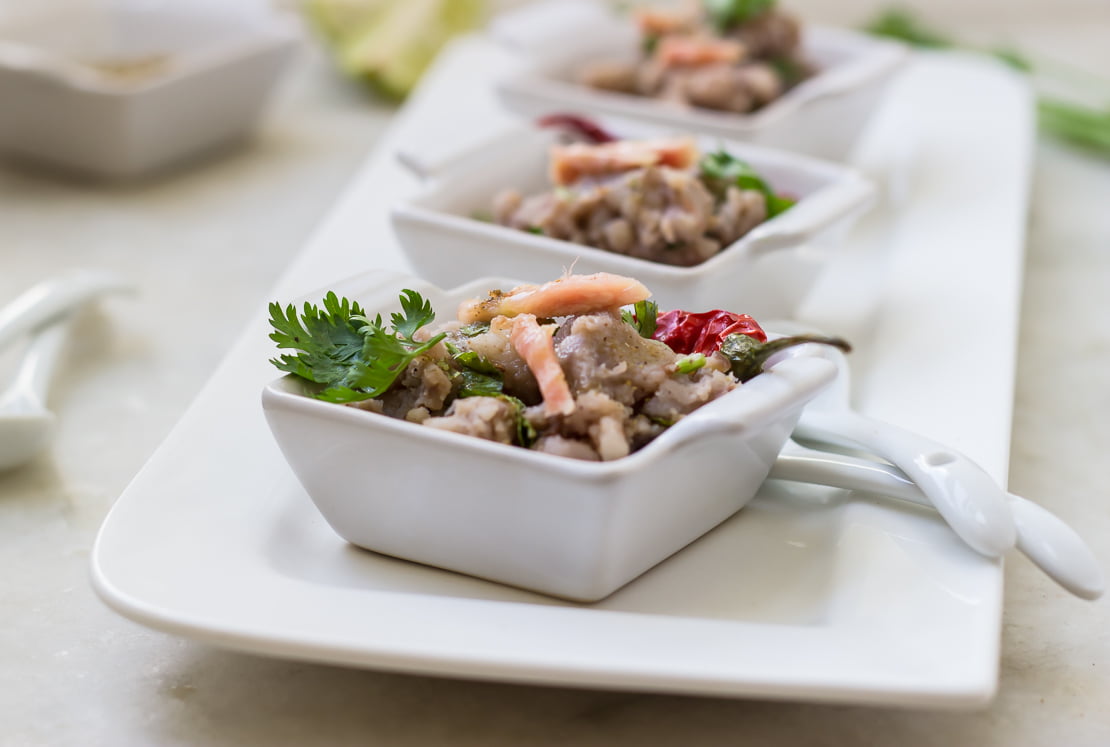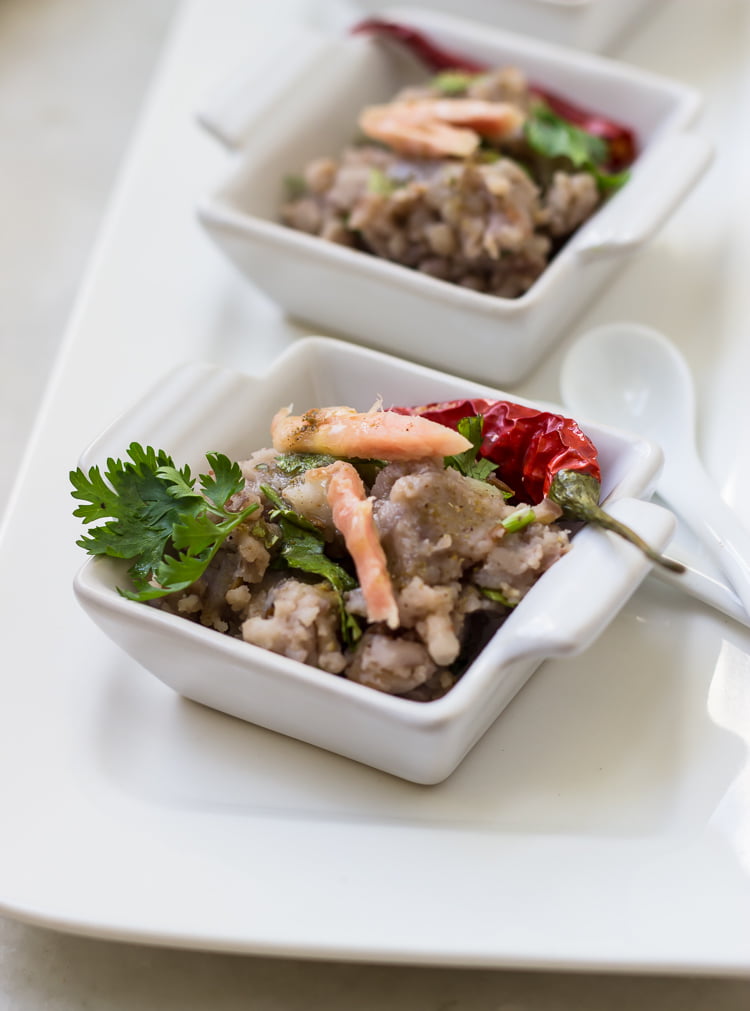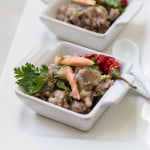Singhare ki Kachri is a traditional recipe using water chestnut or singhara. The boiled singhara is mashed and tempered with homemade ghee.
I was craving the kachri. Our Singhara recipe is served with loads of butter/ ghee, chaat masala, lemon juice, and instant ginger pickle.

Since this is meant as winter food, the use of ghee is important both for digestion and absorption. Being in Pune means that I need to let go of many traditional food items that we enjoyed but now are rarely or very occasionally available in these parts.

It was a pleasant surprise when I saw singhara in a farmers market some weeks ago and immediately decided to use my sister’s kachri recipe which I was missing terribly.
It is rich and tastes best when warm – moist and full of flavors from ginger, lemon, butter, and chaat masala.

Easy Recipe to Make Singhare ki Kachri
Singhare ki Kachri
Ingredients
- 250 gram raw water chestnut singhara
- 1 tbsp ghee clarified butter
- ½ tsp cumin seeds jeera
- ½-1 tbsp butter
- 2-3 dry red chilies
- ½ tsp chaat masala for sprinkling
- 1 tsp ginger pickle for serving
- a pinch asafetida hing
- to taste salt
- juice of 1 lemon
Instructions
- Thoroughly wash the singhara and pressure cook till tender. Gently peel off the skin leaving behind the pulp. Chop them roughly into bite size pieces.
- Heat ghee in a small pan or wok, add dry red chilies and allow them to sputter and leave a gorgeous aroma. You can split the red chilies using a kitchen scissors as well. Splitting the red chilies brings out the strong flavor of chili. Using a slotted spoon remove the chilies and keep aside.
- Now add asafetida and cumin seeds in the ghee. Once they sputter, add the chopped singhara pieces and lightly roast them. Mash them further into a paste while roasting. It will be very easy to mash as they are already very soft from pressure cooking. Add salt to taste. Keep aside.
- When you are ready to serve, place the singhara kachri in a bowl, top it with roasted red chilies, butter, lemon juice, chaat masala and instant ginger pickle.



This sounds so good! Singhara is such a forgotten ingredient in most kitchens! Thanks for sharing this.
Yes. And not just in kitchen, I think it is forgotten in most vegetable markets. It is rare to find it in West of India.